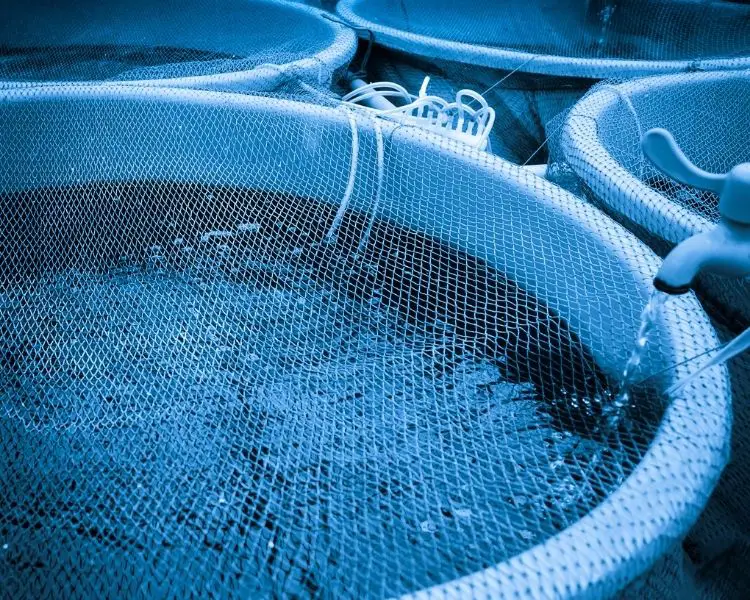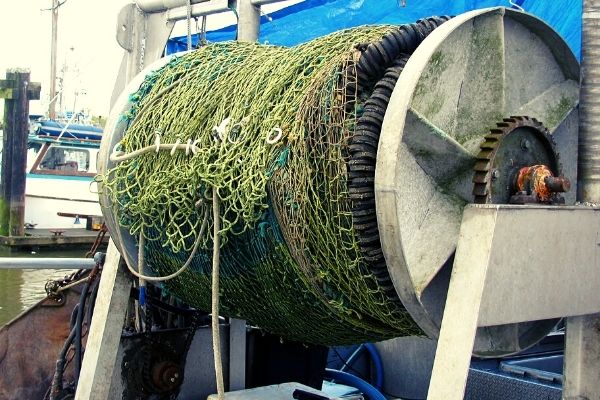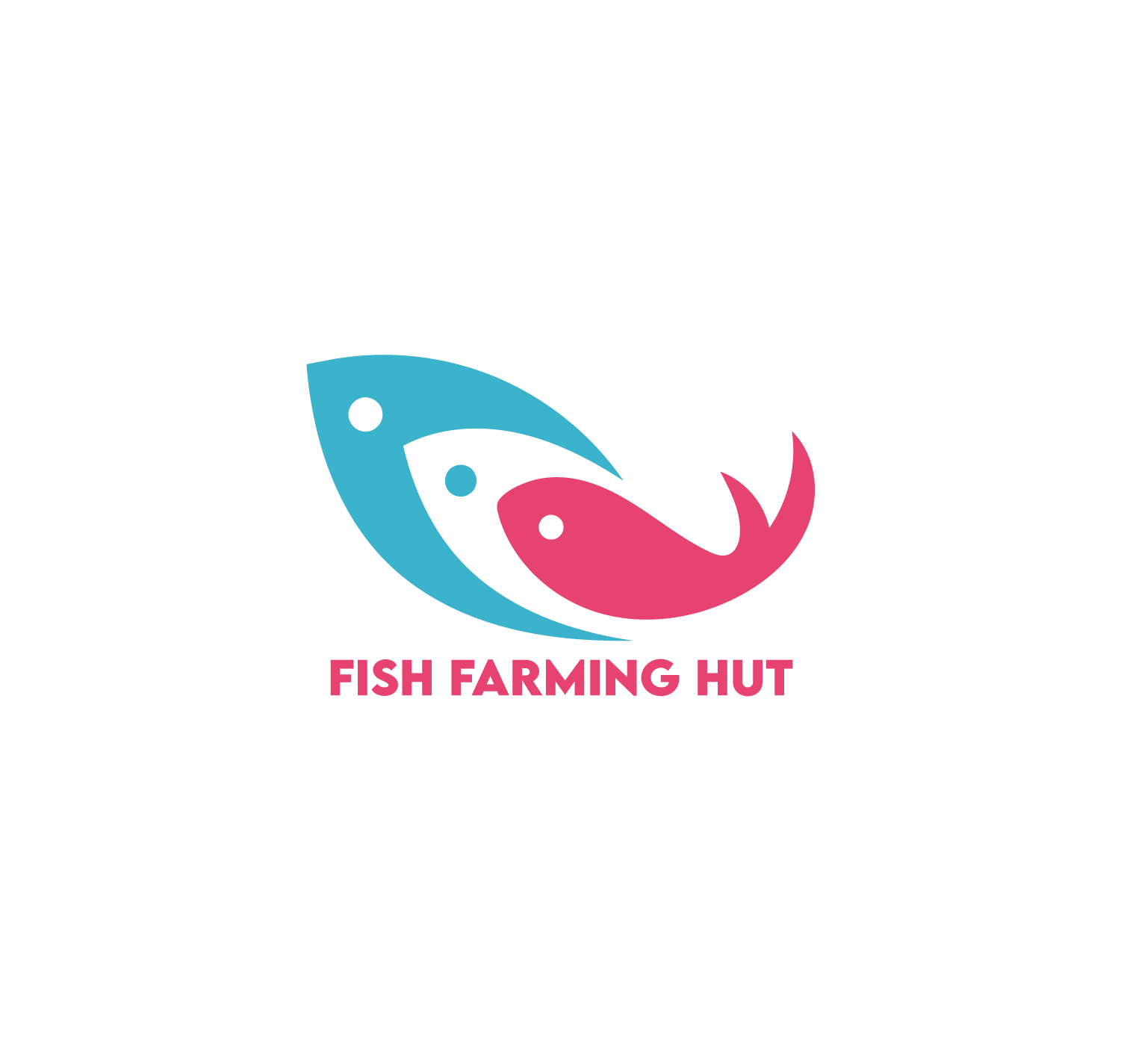Indoor fish farming involves a lot of specialized equipment to raise fish successfully for commercial purposes. Some of the essential pieces of equipment you will need include tanks, a filtration system, handling equipment, water testing, pumps, aerators, and feeders.
In this article, we will look at the different types of equipment needed to run a successful commercial indoor fish farm.

What Kind of Tank Do I Need for Indoor Fish Farming?
Large tanks are essential to fish farming. Most indoor fish farms have several circulars or oval tanks that provide a perfect space for the fish to grow and thrive. The shape of the tank is important to encourage the fish to swim in a natural nonstop motion and provides optimal flow for water circulation.
Most tanks are designed to have slightly sloped floors with a central drain to aid in cleaning and maintenance. This design also allows any solid waste to exit the tank naturally without the hassle of scooping out the fish’s waste products manually.
Tanks can come in various sizes and usually range from 500 to 500,000 gallons. Smaller tanks can be easier to maintain, but you will need more of them to raise the substantial number of fish. It is also important to look at what species of fish you want to farm because some may need to be in a larger volume tank than others.
What Kind of Filtration System Do I Need for Fish Farming?
It is vital to have a filtration system that ensures the maintenance of the water quality in your fish farm and helps eliminate any solid waste particles that may accumulate. There are two popular options for filtration systems: a recirculating aquaculture system or a Biofloc system.
The recirculating aquaculture system tends to be more expensive but more efficient at filtering out unwanted particles. It is an external system equipped with filters that can control nitrogen levels in the fish farm tank system. A recirculating aquaculture system is mostly used in combination with ultraviolet light to sterilize the water and prevent any unwanted bacteria from growing.
Also Read: Types of Aquaculture Systems
The Biofloc system is relatively simpler and less expensive, although it can be harder to control. It has an external piece of equipment for filtering out large waste particles, but the primary source of water quality filtration comes from a vast community of microbes. This bacterial system naturally controls the nitrogen levels in the tank and can also provide supplemental feed to your fish.
Additional aeration is generally required in a Biofloc system to ensure the proper maintenance of the microbial community. Overall, either filtration system will work. The best choice for you depends on the capital you are willing to invest and the sensitivity of the species of fish you are looking to farm.
What Kind of Fish Handling Equipment Do I Need for Fish Farming?
There are several different times when you would need equipment to handle the fish: transportation, grading, and harvesting.
Transportation Equipment
For transportation, you want to make sure you have special transfer tanks. You may be moving smaller fry into a bigger tank or transferring a large number of adults into another tank because of overcrowding. Either way, you need to determine how long the distance between transfers is.
You will need aeration devices for longer distances to prevent the fish from running out of oxygen. Otherwise, short transfers can be done using plastic barrels and buckets.
Grading Equipment
There is the special equipment to sort your fish into different sizes for grading. Grading is crucial to separate marketable fish from fish that still need to grow. Graders can be manual or mechanical.
Manual graders are boxes with holes that only accommodate certain-sized fish. The fish that are small enough to swim through the holes will do so and naturally separate the population according to size. Although these graders tend to be less expensive, they exert more stress on the fish.
- Flexibility: Can Be Cut In Any Dimensions,Suitable for Many Small Fish Tank Size.
- Safe Matriral: Made By High Quality PET Material,None Toxi Release in Water.Same Material As Bottle Water.
- Creative Parts: Offer 6 sets adjustable Isolation Plate Suction Cups,Easily to Fix and Move.
- Advantage: Increasing The Survival Rate of Baby Fish,Isolating Diseased Fish And Aggressive Fish.
- Noted: Chemicals and Aqua Medecine May Cause Color Change Of This Product.
Mechanical graders use rollers equipped with different-sized gaps to separate the fish. Then, with the aid of gravity, fish fall into the appropriately sized bins, and the handling time is much lower than with manual graders.
Fish counters are additional pieces of equipment that help keep track of how many individual fish are collected into each size bin.
Harvesting Equipment
When the fish are ready to be harvested, the best piece of equipment you can have is a net. Seine nets with mechanical reels are very handy when it comes to collecting all of the fish from a tank. The net is slowly raised by a crank so that all the fish are scooped inside.

Seine Net on Reel
There are other methods of harvesting fish that include fish pumps or fish elevators.
Fish pumps are large pumps attached to flexible piping that suck the fish through into a receiving bin. The fish pumps are great for processing large quantities of fish that are hard to capture in a seine net.
Fish elevators lift the fish out of the water one at a time for more efficient processing of larger quantities.
As mentioned earlier, these mechanical methods are more practical for processing tanks that contain a lot of fish that may be too large of a quantity to harvest with a seine net.
What Type of Water Testing Equipment Do I Need for Fish Farming?
When maintaining an indoor fish farm, you need to ensure that the water quality parameters for your fish tanks are at the right levels for your fish. All species have a range of tolerances for different environmental parameters. Daily water testing will help you understand what steps you need to take to ensure that your fish don’t get sick.
There are a variety of excellent water quality testing kits on the market that come with all the parameters for testing that you need in one handy case. Most of these testers will include standards and thresholds for each parameter that you can use to compare your tank water’s quality and take action if the water quality is not at an optimal level.
The most common water quality parameters that need to be tested for fish farming tanks include nitrite, alkalinity, chloride, water hardness, dissolved oxygen, temperature, carbon dioxide, pH, and ammonia nitrogen.
Always check to see the target values for your fish species before assuming they are in the correct range.
- Contains one (1) API POND MASTER TEST KIT Pond Water Test Kit 500-Test, including 6 bottles of testing solution, 3 color cards and 4 test tubes with cap
- Helps monitor water quality and prevent invisible water problems that can be harmful to fish
- Measures ornamental pond pH balance, Ammonia content, Nitrite levels and Phosphate content
- Contains six test bottles, instructions, glass test tubes and color charts for 500+ tests
- Use weekly for monitoring and when water or fish problems appear
What Kind of Water Pumps Do I Need for Fish Farming?
Since fish farming requires a substantial amount of water to be pumped continuously to and through your tank system, you need to make sure that you have an efficient pump to do the job. Propeller or centrifugal pumps are the most popular kinds of water pumps used for fish farming because they require only a small lifting height and can handle a large volume of water.
Pumps that have a rotational frequency of 50 to 60 Hz are usually more than sufficient for the needs of a fish farming tank. However, it’s important to have a constant water pump operation to keep the water circulating. Stagnant water can lead to oxygen deprivation or the growth of unwanted bacteria, which can make your fish sick and go dead.
It’s also good to have a generator for the pump to ensure it has enough power to run constantly.
What Kind of Aerator Do I Need for Fish Farming?
Aerators are essential equipment to include in your fish farm for various reasons. Aerators ensure a constant flow of oxygen through the system so that your fish will not suffer from hypoxic or anoxic conditions. Additionally, if you have a Biofloc filtration system, aeration is necessary so that the microbes don’t use all the oxygen in the water.
There are several different aerator options, including fountains, vertical pump surface agitators, horizontal aspirators, paddlewheels, horizontal prop circulators, and pumping or cascading water systems. Alternatively, you can also add pure oxygen or diffused air straight to your tank system.
The type of aerator you choose will depend on the fish species you are farming. Some fish may not be able to handle options with moving parts that may harm the fish. Other species may be too small and risk getting sucked into rotating propellers.
Check with the manufacturer before finalizing the type of aerator to see if they recommend their product with the fish species you intend to farm.
What Kind of Feeder Do I Need for Fish Farming?
Fish feed is the basic necessity for any fish farm. Ensure you know the recommended feed for your farmed species and have plenty available. You can feed your fish manually or by hand if you want, but with all of the other upkeep and maintenance your fish farm will require, it will be easier to get an automatic feeder. This way, you can control and reduce the wastage of expensive feed.
Electric feeders look like a large bucket with a funnel at the bottom that is usually poised to hover over your fish tanks system. It comes equipped with a timer that can be set to the specified length of time the feed needs to be released as well as the interval in between feeding times.
For larger fish farms with multiple tanks, there are automatic fish feeders that come with one control system where separate feeding times for the feeders at each tank can be set.
- 【Feed Your Fish on Schedule】hygger Automatic Pond Feeder dispenses food automatically for your outdoor fish on scheduled time when you're on vacation or on business trip, weatherproof and safe from wildlife
- 【Easy to read LCD display controller with clock】 Build in controller, this auto fish feeder can program up to 6 times per day, 0-9 portions depending on your preference, each portion lasting 8 seconds. And manual feeding button for instant feeding. Easy to program
- 【Lasts up to Few Weeks】 With a full load of food, the storage bin is 5.5 litre capacity which can feed your fish for several weeks, depending on how many fish you have and how big they are. Ideal for 4-10 mm pellets or sticks food, not for flake! Comes with 2 shaped sliders for your feeding requirement, slider with dense grooved rings can dispense less food for your fish. Vice versa
- 【No Battery Needed】16 foot long electric wire requires No battery. Just wipe clean, less maintenance. Large feeder measures 20.7" L × 14.2" H. Storage food bin measures 10.6" H ×7" Dia can holds fish food up to 5 lbs.
- 【Designed for Koi Pond】This auto feeder require tools (drill and screwer) to be mounted at the pond's edge (wooden or stone floor). Constructed with metal and ABS plastic, resistant to bad weather, snap lid is easy to refill and safe from wildlife
Alternatively, you can construct a demand feeder that the fish can use to feed themselves essentially. For example, you can fill a container with feed and suspend it over the tank. The opening mechanism is attached to a string with a stick at the end, which hangs in the water. The fish learn that the feed bag will open by moving the stick that gives them food.
Demand feeders may not work for all kinds of fish. However, certain species are smart enough to learn to use the feeder, which helps mitigate the cost of an electric feeder.
What Kind of Fish Should I Get for My Fish Farm?
Along with all the necessary tools and equipment, your fish will be the star of the show. Several different fish and shellfish, both freshwater and saltwater, are great for indoor fish farming.
Shrimp, crabs, oysters, and clams are common crustaceans and bivalves that can be farmed. Some of the most popular fish species raised commercially indoors include bass, trout, salmon, tilapia, carp, and catfish.
No matter which species you choose, make sure to check what environment they need to thrive in and if they require any special equipment before you set up your farm.
Conclusion
When it comes to indoor fish farming equipment, there are a lot of things you will need to set up a successful commercial fish farm. A solid circular or oval tank that holds a volume of water large enough to accommodate the needs of your fish is the first vital piece to acquire.
Filtration systems, water testing kits, aerators, and water pumps are essential bits of fish farming that allow you to maintain the proper water quality to ensure that your fish will thrive. In addition, fish handling equipment for transportation, harvesting, and grading is crucial when you are ready to start moving fish out of the tanks.
Last but not least, you want to make sure that you choose the right species of fish to farm. Different species have different needs so research any specialized equipment in addition to the list we’ve provided here before setting up your fish farm.



